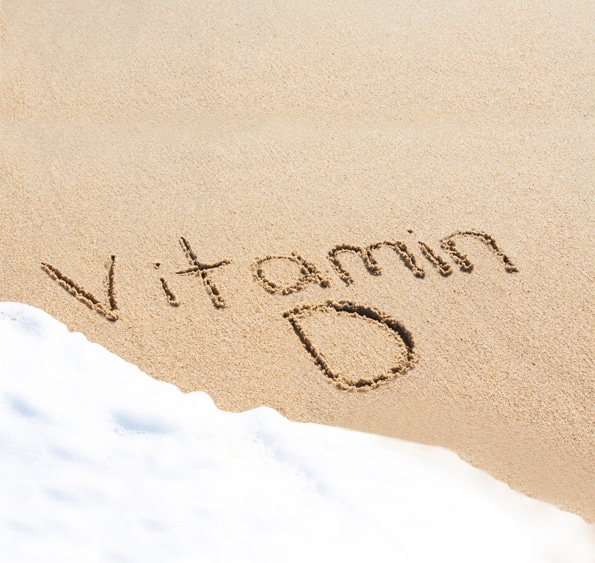April 2, 2013

States bathed in the most ultraviolet B rays have three times fewer cases of autism than those with the least UVB exposure, according to research published in the December issue of the journal Dermato-Endocrinology. The study is the latest to link the "sunshine vitamin" D, which is produced in the skin when exposed to UVB rays, to autism spectrum disorders, which impact 1 in 88 U.S. children.
Its authors suggest the autism epidemic could be curbed if more pregnant mothers and infants had healthy vitamin D levels. We interviewed study co-author John Cannell, MD, founder of the nonprofit Vitamin D Council:
Natural Foods Merchandiser: When did you start suspecting a link between vitamin D and autism?
John Cannell: In 2007, I realized a profound change had taken place when it came to weaning. Instead of moving their children to D-fortified cow’s milk, many parents were weaning their children on juice and other beverages. Meanwhile, mothers today protect their babies’ skin by avoiding sun or putting on sunblock. Vitamin D is crucial for brain and immune system development, yet once they are weaned, many babies have no source of solar or dietary vitamin D. I thought, might that help explain why the incidence of autism has flared up? I published the idea in the journal Medical Hypothesis in 2008.
NFM: What has research shown since?
JC: Five studies (from groups around the world) have shown that vitamin D deficiency is high among autistic children. One study showed that the higher the vitamin D level, the less severe the autism (and vice-versa).
NFM: If mom lacks D while pregnant, is her child at risk?
JC: Researchers have yet to look specifically at vitamin D levels of a large group of autistic children and D levels of their mothers while pregnant. However, a number have looked at maternal D levels and childhood development. One Spanish study looked at psychological development in 4-year-olds and then looked at mom’s vitamin D levels when pregnant. It found a direct relationship between D deficiency and abnormalities in psychological development. Another Australian study found that the lower the mom's D levels during pregnancy, the more likely the child was to have speech difficulties.
NFM: How did you do your latest study?
JC: We obtained surface UVB readings from around the country and state-by-state incidence of autism from the U.S. government and correlated the two. We controlled for age, race, dietary considerations and other factors.
What did you find?
JC: The higher the vitamin D-producing UV radiation in a state, the lower the incidence of autism. Arizona has three times less autism than Maine. This is the first time there has been such a clear association shown between autism and surface UVB radiation.
NFM: How might lack of vitamin D be a risk factor for autism?
JC: Autoimmune disorders (which some research suggests autism is among) start with a dysfunctional immune system, followed by a trigger (a fever, allergy, vaccine). The lack of vitamin D (either in utero or after weaning) causes a dysfunctional immune system, leaving the child prone to such disorders.
NFM: This science is young. Are there other reasons for pregnant moms to take D?
JC: There have been randomized controlled trials that have shown that 4,000 International Units per day can prevent C-section, pre-eclampsia, low birth weight, maternal infection and many other problems.
NFM: What should parents do?
JC: Modern humans simply cannot get enough D-producing UVB radiation. Mom should take adequate amounts of D before she even plans to conceive a child—5,000 IU per day—and continue during pregnancy and while breastfeeding. If she is not taking that amount, the breastfeeding infant should take 1,000 IUs daily. Formula-fed infants need an extra 600 IUs daily. Once weaned, the infant needs to take vitamin D—1,000 IUs per day for under 25 pounds; 2,000 IUs for up to 50; and 3,000 for 50 to 75 pounds.
Another perspective: Vitamin necessary, but too early to draw conclusions
Vitamin D researcher Adit Ginde, MD, says that while the vitamin D-autism connection drawn in the recently published study is a plausible one, it is far too early to draw conclusions.
"This study is interesting and piques curiosity, but it doesn't come close to proving anything," says Ginde, an associate professor of emergency medicine at the University of Colorado School of Medicine. He cautions that the recent study in Dermato-endocrinology uses a comparatively weak design (compared to other forms of observational studies) and is "hypothesis generating" at best. He also points out that the study authors, William B. Grant and Cannell, are both longtime vitamin D advocates, funded in part by companies that make D supplements.
That said, Ginde stresses that numerous professional guidelines—including those put out by the American Academy of Pediatrics—recommend vitamin D supplements for people of all ages. "The question is: How much do you need?"
The jury is still out. But for now, he says 2,000 IUs daily should suffice for a pregnant or lactating mother.
About the Author(s)
You May Also Like
.png?width=700&auto=webp&quality=80&disable=upscale)




